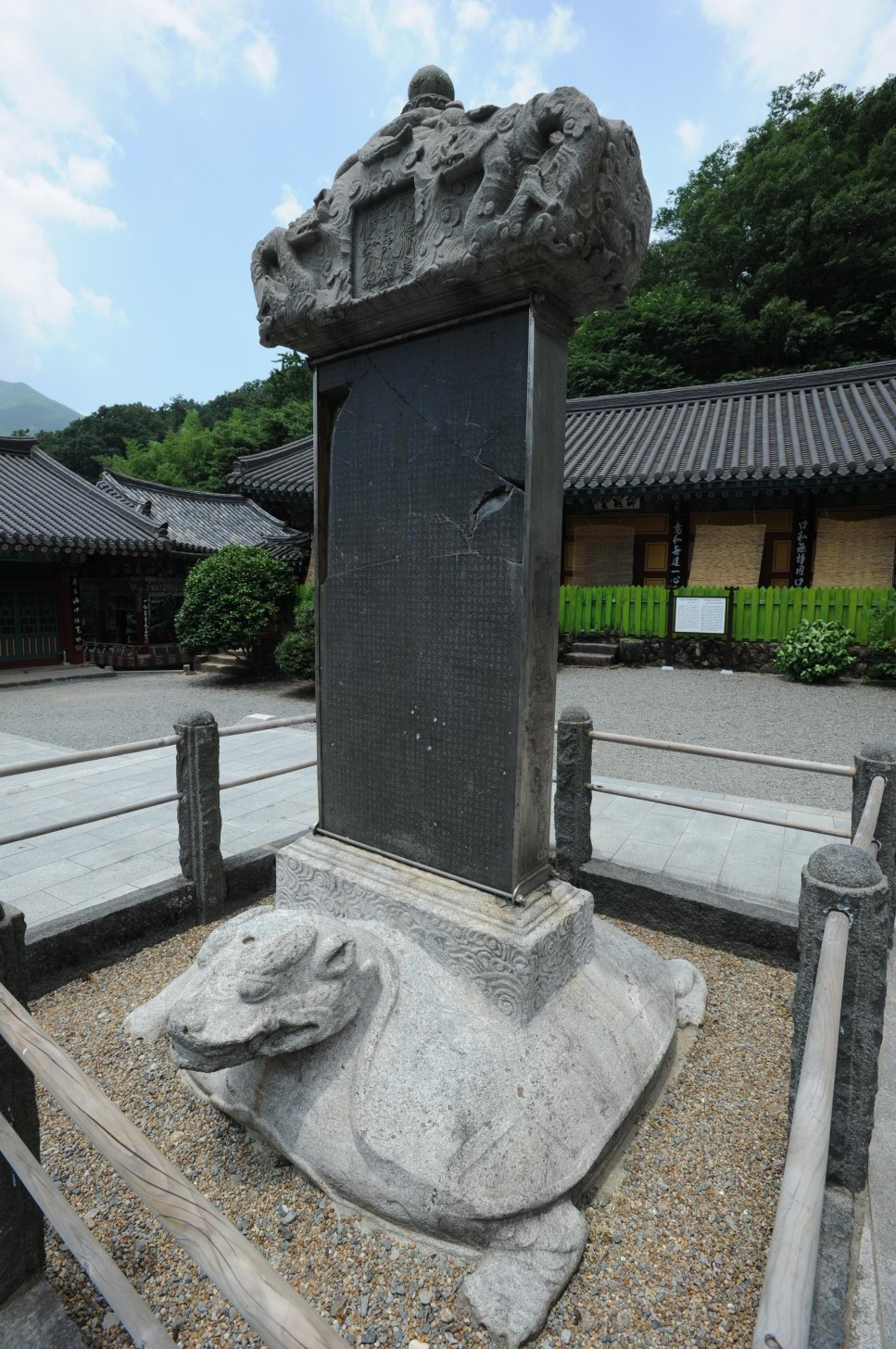Stories of Korea’s National Treasures 47

Photo Credit: Cultural Heritage Administration of Korea
Stele of Buddhist Monk Jingam at Ssanggyesa Temple
(Hadong, Gyeongsangnam-do)
🏯 1. A Monument to a Great Zen Master
In the tranquil valley of Ssanggyesa Temple in Hadong stands a grand stone stele — the Stele of Buddhist Monk Jingam (Jingam Seonsa Tapbi), a monument dedicated to one of the most revered monks of the Unified Silla period (774–850 CE).
Erected in 887 CE, this stele commemorates Master Jingam, who brought renewed depth to Korean Zen Buddhism through his profound teaching and virtue.
It stands as both a memorial and a masterpiece — uniting faith, philosophy, and artistry in one enduring form.
The monument reflects the spirit of an age when enlightenment was sought not only through meditation but through beauty and meaning carved in stone.
🪨 2. Structure and Artistic Details
The stele consists of three main parts:
a turtle-shaped base (bixi) symbolizing longevity and steadfast faith,
a tall upright stone slab bearing the inscription,
and a capstone carved with dragons coiling around a sacred jewel.
The combination of these elements embodies earth, wisdom, and the heavens — a microcosm of Buddhist cosmology.
The inscription, composed by the eminent scholar Choe Chi-won (857–?), is considered one of the finest examples of Korean epigraphy.
His eloquent prose, blending literary grace with spiritual depth, praises Master Jingam’s life of devotion and insight.
The carving is precise yet fluid, the calligraphy alive with rhythm — a harmony between intellectual refinement and emotional sincerity.
🌄 3. The Spirit of Master Jingam
Master Jingam was a central figure in the development of Korean Seon (Zen) Buddhism.
He emphasized the unity of meditation and daily life — teaching that enlightenment is not found apart from the world, but within it.
The stele reflects his teachings perfectly: solid yet gentle, imposing yet humble.
Its dragon capstone represents the awakening of wisdom, while the turtle base signifies the enduring foundation of truth.
Together, they express the balance between heaven and earth, thought and silence — the very essence of Zen.
To stand before this monument is to feel the presence of a teacher who transcended both time and form.
🌿 4. Preservation and Legacy
The Stele of Buddhist Monk Jingam has survived more than eleven centuries, remarkably well-preserved in both structure and inscription.
Designated National Treasure No. 47, it stands as one of Korea’s greatest stone monuments — a fusion of literature, sculpture, and calligraphy that continues to inspire.
The monument is often studied as a pinnacle of Silla-era epigraphic art, representing the height of spiritual expression in tangible form.
Even today, the stele’s surface bears the energy of its creation — every carved word resonating like the quiet echo of a bell.
💬 5. A Warm Reflection
“This stone bears no sound, yet it speaks.
Its words, carved a thousand years ago,
still echo through the heart —
teaching that truth, once awakened,
needs no voice to endure.”
📌 Notice
The National Treasure number indicates the order of designation, not a ranking of value.
For more information, please visit the 👉National Heritage Portal